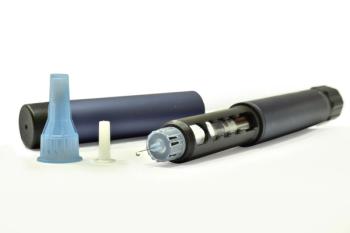
- Drug Topics August 2020
- Volume 164
- Issue 8
Opicapone Can Help Treat Patients Experiencing “Off” Episodes With Parkinson Disease
Levodopa/carbidopa is currently the gold standard for controlling motor symptoms associated with Parkinson disease.
Levodopa/carbidopa is currently the gold standard for controlling motor symptoms associated with Parkinson disease. For patients taking this medication, symptoms such as tremor, difficulty walking, and initiating movement can return throughout the day as the levodopa wears off. On April 24, 2020, the FDA approved opicapone (Ongentys; Neurocrine Biosciences) as an adjunctive treatment for patients with Parkinson disease who experience these “off” episodes.1
Levodopa is peripherally metabolized by catechol-O-methyl- transferase (COMT). Opicapone, a selective and reversible COMT inhibitor, aims to prevent this metabolism in the blood and increase the duration of levodopa activity by allowing greater availability across the blood-brain barrier. Evidence suggests that levodopa shortens these episodes compared with entacapone, a treatment already available on the market, with no new safety concerns observed.2
Efficacy
Two randomized, multicenter, double-blind, 12-week trials were conducted in 522 patients taking levodopa/carbidopa who had inadequate control of their symptoms. Trial 1 took place at 104 sites in European countries; trial 2, at 69 sites across Europe and Asia. Opicapone 50 mg was given
to 265 patients, and the remaining 275 received a placebo. The primary end point was the change in mean absolute off-time. The secondary end point was on-time without troublesome dyskinesia. Patients kept 24-hour diaries, and efficacy was measured by recorded change in hours from baseline off-time.3,4
Patients who were treated with opicapone demonstrated a significant decrease in mean off-time compared with those who received placebo. Of note, most patients were white; therefore, efficacy among different races cannot be determined.3
Safety
The most reported adverse effect (AE) of opicapone was dyskinesia, which occurred in 20% of patients receiving treatment. This was the most comment reason for discontinuation of therapy. Other common AEs defined as at least 4% incidence and greater than placebo include constipation, increased blood creatinine levels, syncope, and weight loss.2 Serious AEs may include decreased blood pressure and fainting, somnolence during normal activity, uncontrolled movements, abnormalities in impulse control, and changes in heart rate and blood pressure when taken with nonselective monoamine oxidase (MAO) 3 inhibitors. The occurrence of AEs wassimilar between men and women, as well as between patients above and below age 65 years.4
Dosing and Administration
Opicapone is available as hard gelatin capsules in 25-mg and 50-mg doses. The current dosing recommendation is one 50-mg oral capsule taken every 24 hours, at bedtime, in addition to levodopa/carbidopa. If a dose is missed, the subsequent dose should be taken at the scheduled time the following day. Do not double doses. For patients with moderate hepatic impairment (Child-Pugh class B), the recommended dose is 25 mg at bedtime. Patients with severe hepatic impairment (class C) should avoid use because there are no studies evaluating this population. Use with nonselective MAO inhibitors is contraindicated.1,3,4
Patients should be informed not to eat at least 1 hour prior and 1 hour after taking opicapone, because food decreases the mean peak plasma concentration by 62% and mean overall plasma exposure by 31%.3
References:
- Neurocrine Biosciences announces FDA approval of once-daily Ongentys (opicapone) as an add-on treatment for patients with Parkinson’s disease experiencing “off” episodes. News release. Neurocrine Biosciences, Inc. April 27, 2020. Accessed June 30, 2020.
https://ongentyshcp.com/assets/pdf/Neurocrine-Biosciences-Announces-FDA-Approval-of-Once-Daily-ONGENTYS-opicapone.pdf - Ferreira JJ, Lees AJ, Poewe W, et al. Effectiveness of opicapone and switching from entacapone in fluctuating Parkinson disease. Neurology. 2018;90(21):e1849-e1857. doi:10.1212/WNL.0000000000005557
- Opicapone (Ongentys). Package insert. Neurocrine Biosciences, Inc; 2020. Accessed June 30, 2020. https://www.accessdata.fda.gov/drugsatfda_docs/label/2020/212489s000lbl.pdf
- Drug trials snapshots: Ongentys. FDA. Updated May 8, 2020. Accessed June 30, 2020. www.fda.gov/drugs/drug-approvals-and-databases/drug-trials-snapshots-ongentys
Articles in this issue
over 5 years ago
Pandemic Presents Unique Challenges for ADHD Managementover 5 years ago
Health Crisis Highlights Value of Pharmacy Compoundingover 5 years ago
Pharmacy Unions Push for Improvementsover 5 years ago
Investigators Find COVID-19 Connection in Vasculitisover 5 years ago
Protect Your Pharmacy’s Online Presenceover 5 years ago
Communicating Facts Can Help Boost HPV Vaccination Ratesover 5 years ago
Brace for Flu Season as COVID-19 Pandemic Persistsover 5 years ago
Managing Drug Diversion Amid PandemicNewsletter
Pharmacy practice is always changing. Stay ahead of the curve with the Drug Topics newsletter and get the latest drug information, industry trends, and patient care tips.





























































































































